Touring Bike vs Road Bike: Differences & Uses
Getting a bike that is completely new to you is exciting. Finding the ideal bike for you requires careful consideration and takes time, whether it’s new off the rack, delivered to your door, or used in your neighborhood.
Perhaps you’re eager to hit the road and go bicycling with your friends this summer, but you’re unsure of what kind of bike will suit you the best. Learning more about the different bike types and where they excel is a good place to start.
I’ll discuss the differences between road bikes and touring bikes in this piece, including which is quicker, whether a road bike can double as a touring cycle, and factors to take into account while deciding between the two.
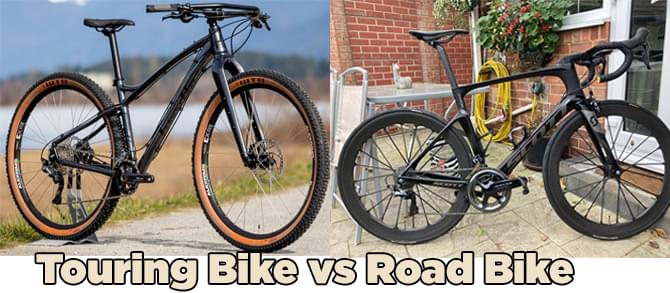
Differences Between a Touring Bike and a Road Bike:
Touring bikes and road bikes look similar but serve different purposes. Different materials, smaller wheels, higher gears, and shorter wheelbases are used in the construction of road bikes. Longer journeys require bikes that are built for touring. Let’s delve into the specifics and justifications behind the designs.
Read More About Touring Bike and gravel bike: https://bicyclegod.com/touring-bike-vs-gravel-bike/
Frame material and weight:
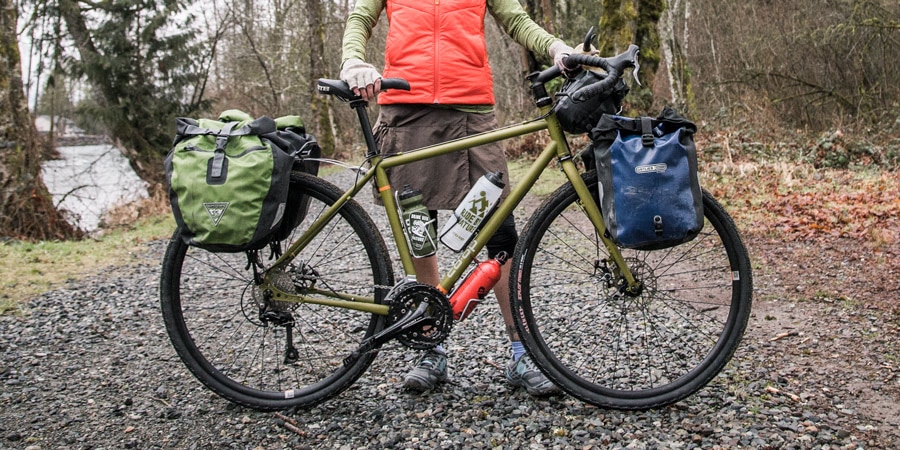
Road bicycles are quick and light. Road bikes are the best option if you need speed. It should come as no surprise that professional athletes compete on these bikes. They work well for morning commutes and are excellent as a training or race bike. Typically, the frame is made of carbon or aluminum, both of which keep the frame light. If you don’t commute by bike, road bikes are pretty simple to transport upstairs or onto a bus or train.
Strength and stability are the key components of touring bikes. This makes sense given that they are designed to safely convey both the rider and huge amounts of equipment. Thankfully, comfortable touring bikes are available.
Steel is the best material for touring bicycle frames. Don’t take it if you locate one that isn’t. Steel frames might make bikes heavier, but they also provide a lot of benefits. Due to their flexibility, they are the finest at absorbing bumpy terrain and maintaining a smooth ride.
Many bike tourists have heartbreaking tales of their bikes breaking down in the middle of a long journey. If your bike frame develops bends or cracks, you can quickly find a local welder to fix them so you can go back on the road. Steel frames make this possible. If you don’t have the right tools for a bike with an aluminum, carbon, or titanium frame, your journey may have to be cut short.
Comfort
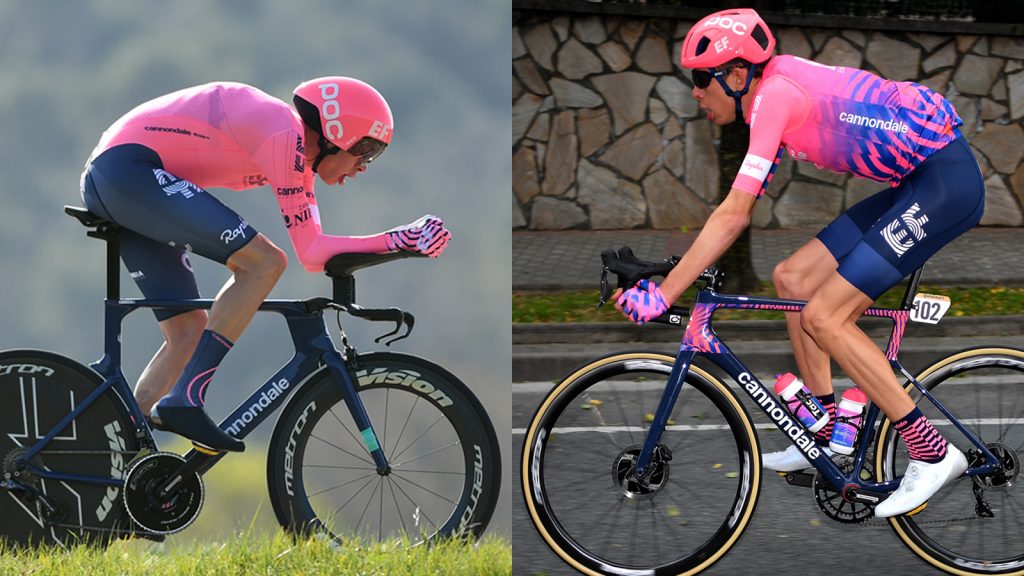
The most important components for a bike’s comfort are the handlebars and saddle.
A road bike often has drop bars for the handlebars. They are lowered, as their name suggests, to promote a more aerodynamic riding position.
cyclists competing while holding the handlebars in the “dropped” posture.
For racing bikes, lower the handlebars.
The typical road bike saddle designs are designed to be utilized for shorter journeys.
When touring, you spend days on end in the saddle, so your bike needs to be comfortable. The key to a comfortable ride is your saddle, but the handlebars and saddle work closely together.
Being able to change positions frequently can help relieve some of that pressure since the more upright you ride, the more touch you have with the back portion of your saddle. Butterfly handlebars, commonly referred to as trekking bars and offering different hand positions so you can continue modifying your steering style, are favored by many touring cyclists.
Hot Sale Ting Ao
Trekking Cycling Road Butterfly Aluminium Alloy Multi-Position Black Handbag and Sponge Handlebar Set Mountain Bike Cruise Mount.
Most hand-position choices are offered by butterfly handlebars.
However, touring bikes are also available with flat bars and drop bars.
wheelbases and wheels

The tires are one of the most noticeable distinctions between road bikes and touring cycles. The average road bike tire is 23mm, however, it can be as thin as 20mm or 25mm. Wheels with a diameter of 700c or less are made to be used on the tarmac that is flat and smooth. Gravel does not suit them well.
When riding a touring bike, wider tires that can absorb bumps from tougher routes are essential. For dirt roads, they range from 32mm to 45mm. You may choose how durable your tires should be by considering where you intend to do most of your riding. Check out our list of the top bicycle touring tires available right now if you’re ever looking for new tires for your touring bicycle.
The narrower horizontal space between the front and rear axles on road bikes is another way that they are manufactured differently from touring bikes. This increases the bike’s responsiveness and provides you with greater steering control. Additionally, they are better for making sharp turns around curves due to their lower center of gravity. Road bikes are excellent for slicing through traffic on morning journeys since they are light and responsive.
Wheelbases on touring bikes are longer. Sometimes only the rear wheel is pushed farther back. The bike feels less responsive after this change, but it also feels more stable and comfortable. With additional room, you can pedal without your heels catching on your back panniers while carrying large luggage.
Mounting points and gears
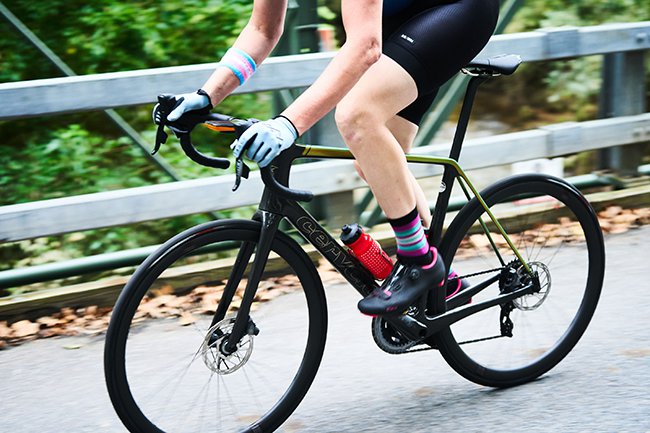
Touring bikes are designed to be able to carry all the equipment you’ll need, so they have extra mounting points like a front and rear rack, up to three water bottle holders, and lots of room for fenders to prevent mud from splashing your belongings.
Touring bikes parked at a campsite with their gear stacked on.
You need a lot of mounting places on a touring bike to accommodate all that gear. (Phoenix Champion | Creative Commons)
Although mounting points can be added to road bikes, drilling into the frame is not recommended because it will weaken it. A hydration pack is preferable to adding more holes for water bottles when riding a road bike.
Are touring bikes as fast as road bikes?
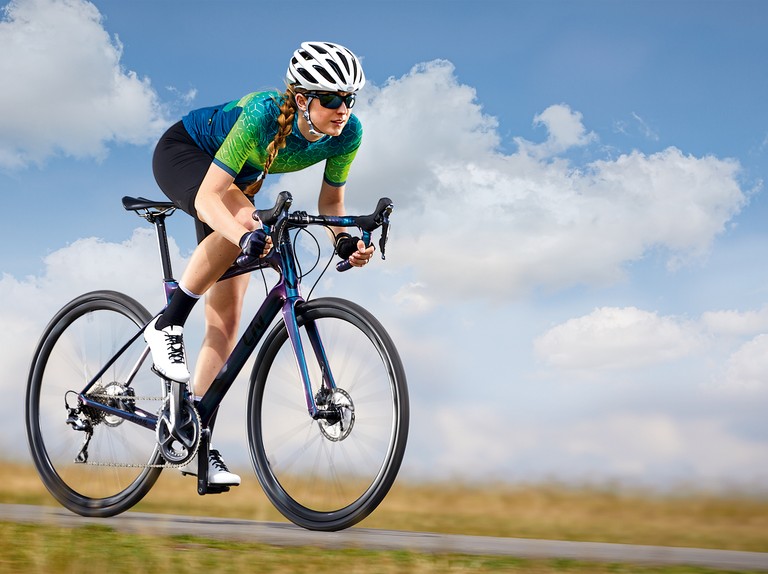
The purpose of touring bikes does not to require them to be as quick as road bikes. A touring bike with a genuine steel frame is heavier and slower moving than one without one, but it is a stronger, safer option for a bike that is fully laden. Pacing yourself and taking in the landscape will make a long journey more enjoyable than trying to cover ground rapidly and exhausting yourself.
At the bike shop, one of my coworkers told me about his spectacular 50-day bike adventure across Canada, which averaged 120 kilometers per day. It seems to me that the speed at which you complete the 120 km of bike each day is unimportant if you are dedicated to doing it.
Things to consider when deciding between a road bike and a touring bike:
You could still be unsure of the right bike for you even after learning the distinctions between road and touring cycles.
This depends on a few things, the most important of which is understanding why you’re purchasing the bike. What kind of terrain are you going to ride on? How far are you planning to go? What equipment do you need to bring? How much can you spend?
A road bike should meet your needs if you want to use your bike primarily for day trips or weekend excursions on paved roads.
Additionally, road bikes are more reasonably priced than touring cycles if you’re seeking a less expensive option.
However, a sturdy steel-framed touring bike is unquestionably the best choice if you intend to travel by bike for a month or perhaps an entire year on less well-maintained roads and you need to transport a tent and a lot of stuff.
Nothing compares to the independence of being able to just get on a bike and ride somewhere fresh. Anyone who has set their sights on a protracted, multi-month trip and made it happen inspires me enormously. If the concept interests you, read our guide to bike touring to find out more.
I adore having the physical stamina to carry myself independently somewhere new. But a journey across a continent is difficult to envision. I suppose I’ll stick to flying for the time being.
They are lowered, as their name suggests, to promote a more aerodynamic riding position.
The narrower horizontal space between the front and rear axles on road bikes is another way that they are manufactured differently from touring bikes.
Comparison Table: Tour Bike or a Road Bike –
Let’s take another look at certain features that make a substantial difference between a road bike touring bike:
| Features | Touring Bike | Road Bike |
| Weight | Heavy | Light |
| Frame Material | Steel | Aluminum/Carbon |
| Wheels | Wide | Narrow |
| Gearing | Low | High |
| Purpose | Long rides | Fast rides |
| Price | Affordable | Expensive (depending on the model) |
Related Posts
-
 Funny Happy Thanksgiving Wishes 2019 for a Smile No Comments | Oct 21, 2019
Funny Happy Thanksgiving Wishes 2019 for a Smile No Comments | Oct 21, 2019 -
 50 Uplifting Quotes for Sleep Apnea and COPD Warriors No Comments | Mar 12, 2025
50 Uplifting Quotes for Sleep Apnea and COPD Warriors No Comments | Mar 12, 2025 -
 Happy Valentine Day Greetings Messages to Friends Family 2019 No Comments | Feb 5, 2019
Happy Valentine Day Greetings Messages to Friends Family 2019 No Comments | Feb 5, 2019 -
 CPAP Machine Cost in Bangladesh [Buying Guide] No Comments | Mar 17, 2025
CPAP Machine Cost in Bangladesh [Buying Guide] No Comments | Mar 17, 2025
About The Author
ikrobin
Hi, I am an IT consultant by profession. I am working as a content writer on this site and try every time that fullylicensekey can bring a smile on your face. I like to share free software giveaways. To get a more latest giveaway you can subscribe to my website.





